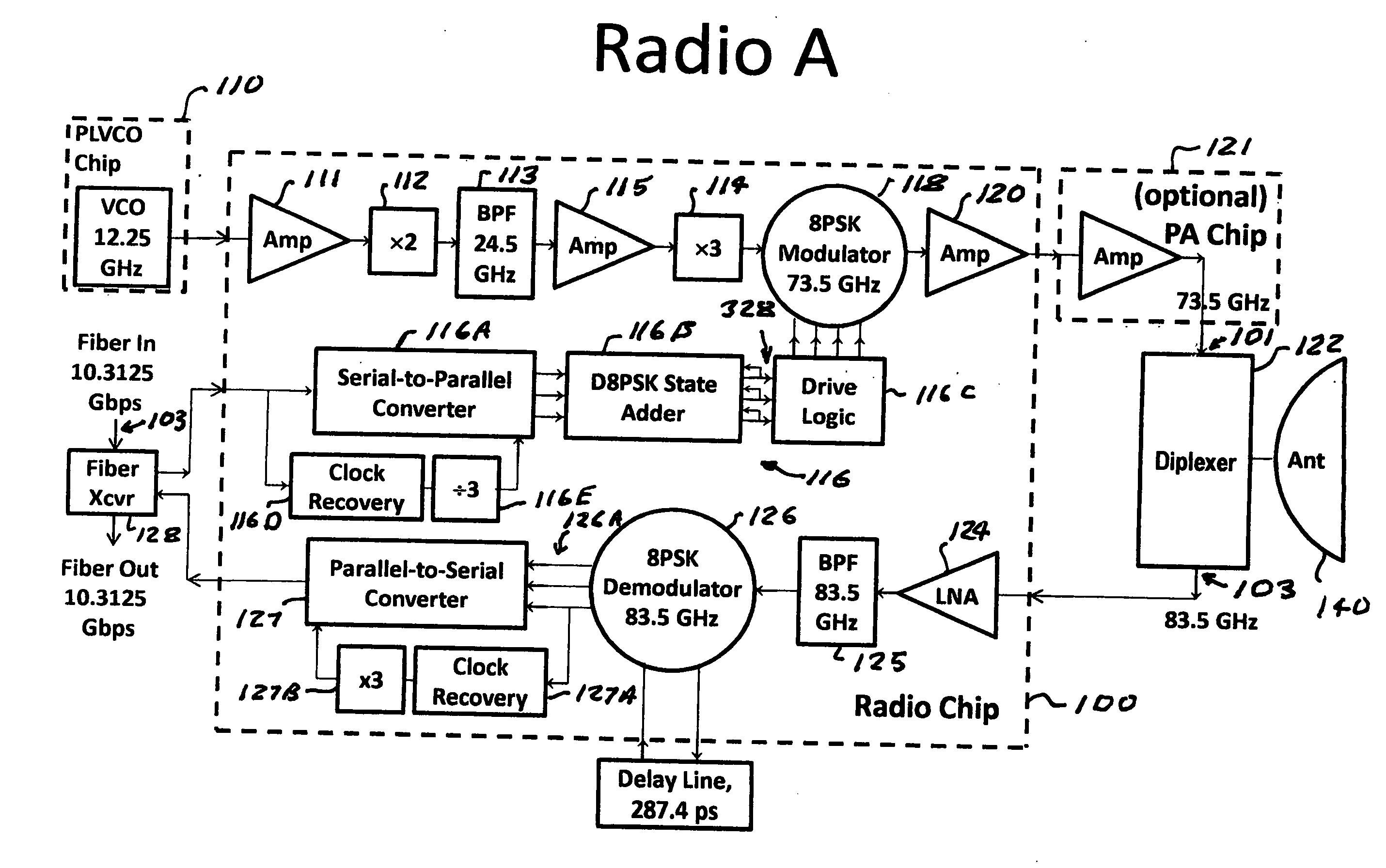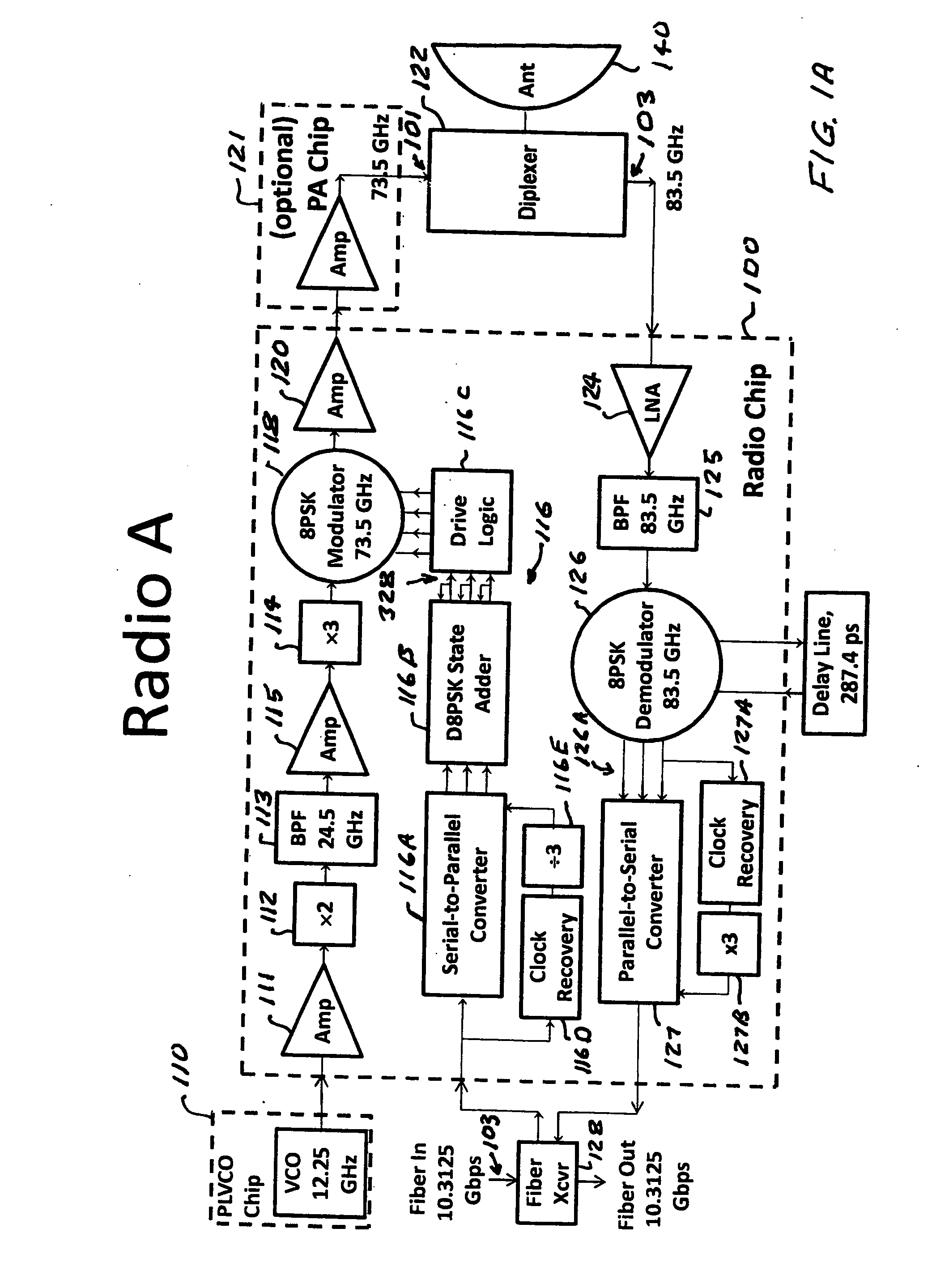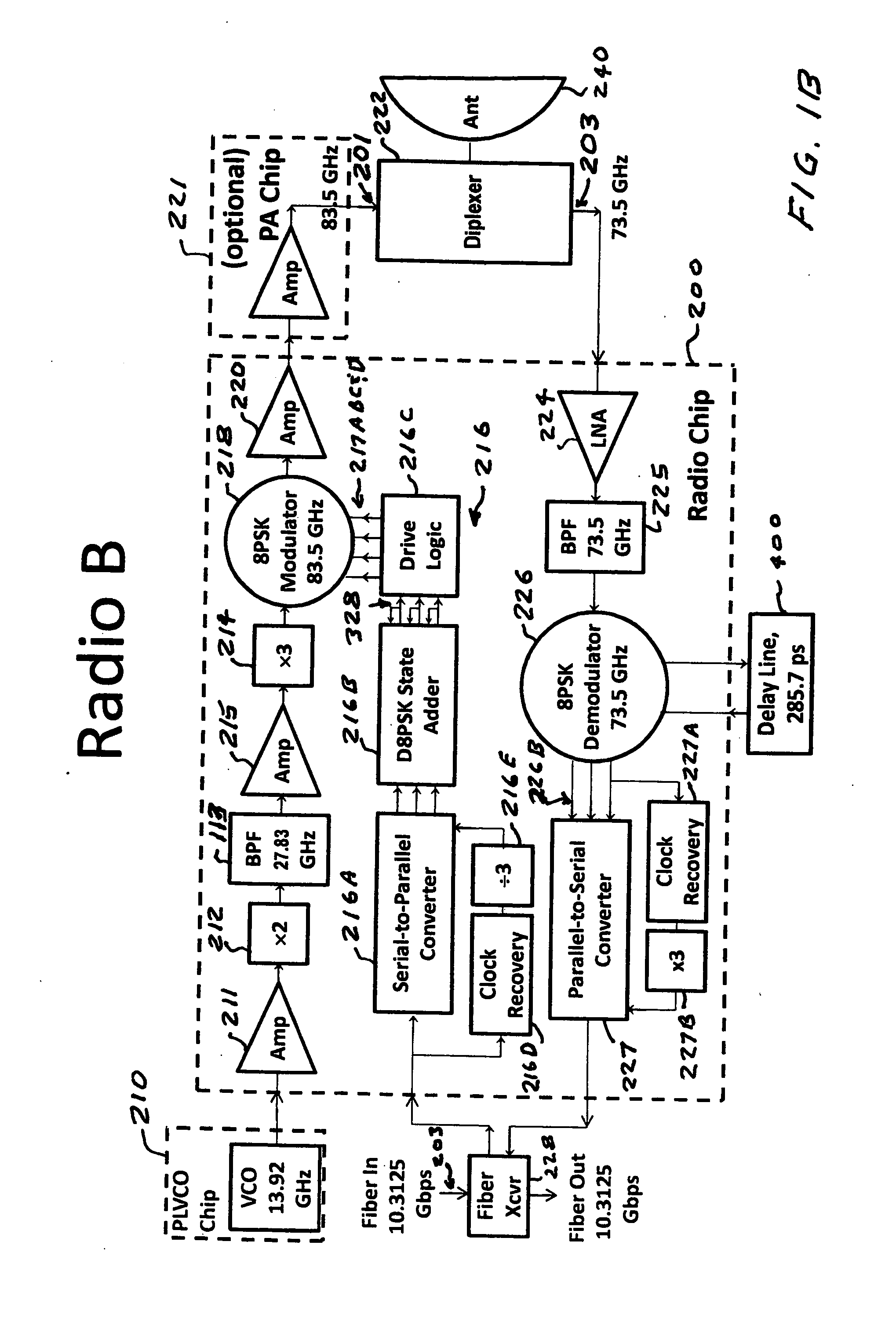10GbE E-band radio with 8PSK modulation
a radio and e-band technology, applied in the field of radio systems, can solve the problems of the distortion of the signal waveform, and the upconverter oscillator affecting the bit-error performance of the 10 gige radio
- Summary
- Abstract
- Description
- Claims
- Application Information
AI Technical Summary
Benefits of technology
Problems solved by technology
Method used
Image
Examples
first preferred embodiment
Applicants' First Preferred 10-GigE Radio
[0078]A first preferred embodiment of the present invention satisfying the needs outlined above is a 10-GigE radio. The radio is based on and is a substantial improvement of the basic circuit design of a 3.072 Gbps radio described in parent patent application Ser. No. 12 / 928,017 (now U.S. Pat. No. 9,008,212) which is the parent of Ser. No. 12 / 228,114 filed Aug. 7, 2008 which is the parent of Ser. No. 12 / 930,947 filed Jan. 29, 2011 which is the parent of this application. This radio utilized radio circuitry as specifically described in FIG. 3 of the above patent which is reproduced in this application as FIG. 7.
[0079]To support a digital data rate of 10.3125 Gbps (10 Gigabits raw data per second plus IEEE 802.3 Clause 49 64b / 66b encoding which accounts for the excess 0.3125 Gbps), the radio uses 3-bit symbol encoding and has its carrier modulated at a symbol rate of 3.4375 Giga-symbols-per-second so as to fit into the 5 GHz channel modulation ...
second preferred embodiment
Applicants' Second Preferred 10-GigE Radio
[0116]Applicants' second preferred embodiment is also a 10 GigE radio with 8PSK modulation and is very similar to the first preferred embodiment. This second preferred embodiment is described in detail below:
[0117]Benefits of 8PSK Modulation
[0118]At a given data rate, an 8PSK-modulated radio operates at a two-times higher symbol rate than a more common 64-QAM-modulated radio, necessitating higher-performance and more expensive digitizers, digital-to-analog converters, and digital logic components. However, the sparser 8PSK constellation allows error-free operation at 5 dB lower signal-to-noise ratio than 64-QAM. Because the signal is transmitted at full power for every constellation point, power efficiency is 8 dB higher than 64-QAM. Since amplitude is fixed for all constellation points, the transmitter need not be backed off from full power but can be operated well into compression, offering another 7 dB advantage over 64-QAM. Combined, the...
PUM
 Login to View More
Login to View More Abstract
Description
Claims
Application Information
 Login to View More
Login to View More - Generate Ideas
- Intellectual Property
- Life Sciences
- Materials
- Tech Scout
- Unparalleled Data Quality
- Higher Quality Content
- 60% Fewer Hallucinations
Browse by: Latest US Patents, China's latest patents, Technical Efficacy Thesaurus, Application Domain, Technology Topic, Popular Technical Reports.
© 2025 PatSnap. All rights reserved.Legal|Privacy policy|Modern Slavery Act Transparency Statement|Sitemap|About US| Contact US: help@patsnap.com



